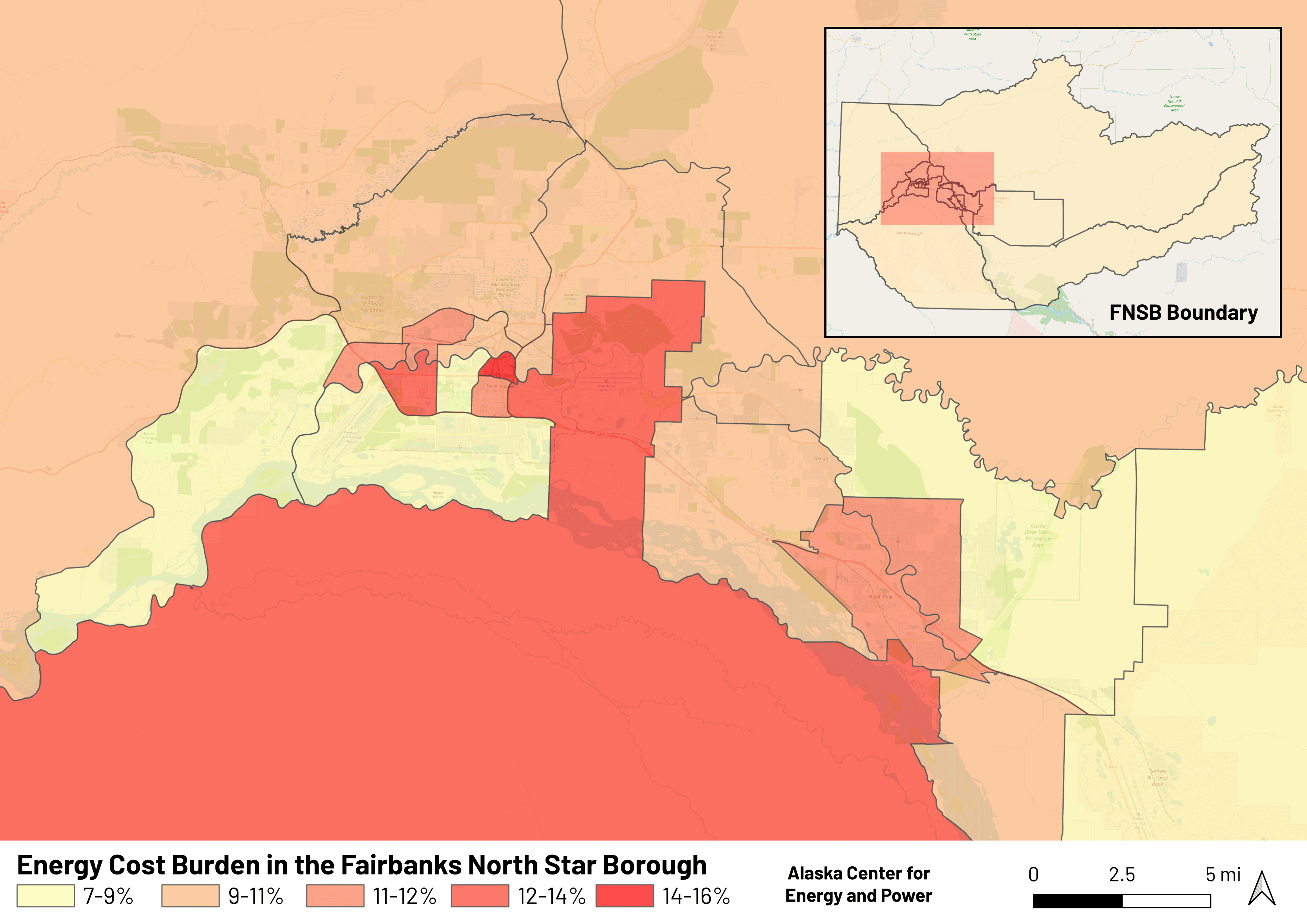Energy costs impose high burden on Fairbanks residents
Yuri Bult-Ito
Aug. 21, 2024

View from UAF's Joseph E. Usibelli Engineering Building overlooking the Fairbanks area.
A new report by University of Alaska Fairbanks researchers reveals the energy burden for Fairbanks North Star Borough residents to be drastically higher than the Lower 48.
Energy burden, as defined in this report, is the percentage of annual income spent on residential energy services such as space heating and electricity.
The energy consumption and expenditures in Alaska are the highest in the nation. And the energy cost in the FNSB is the highest in the Railbelt, the electrical grid that stretches from Fairbanks through Anchorage to the Kenai Peninsula.
The study finds that FNSB residents are estimated to spend 10% of their income on energy in 2024. This is significantly higher than the national average of 3% that was recently estimated by the American Council for an Energy-Efficient Economy in 2020.
The researchers also examined the data to see how the energy burden differs across the borough. They estimated energy burden by looking at census area differences in the housing stock that affect energy use — such as the size and age of home — and median household income, as well as market energy prices in the borough.
“One of the biggest takeaways was that the back-of-the-napkin estimate for energy burden in 2018 was 6.5%, which I could see while analyzing the data, but it’s 10-12% now,” said Jesse Kaczmarski, a data science researcher and economist with the Alaska Center for Energy and Power at UAF and the lead author of the report.
That is because energy prices have almost doubled since the 2018 Alaska Housing Finance Corporation’s Housing Assessment, he explained.

Those estimates used prices from 2017, but, according to price estimates from February 2024 and the third quarter 2023 FNSB Community Research Quarterly, the borough is currently experiencing some of the highest prices for space heating fuels in years.
According to the Energy Information Administration, if a household spends 6% or more of its income on energy, it is considered to be a high energy burden household. In 2018, FNSB residents were already experiencing high energy burden, but now the burden is even higher — an average household in the FNSB spends more than three times the national average and almost twice as much as the high energy burden classification of 6%. This figure can be even higher, depending on where you live in the borough.
“This means that there’s been a huge inflation in energy prices,” Kaczmarski said. “And energy cost increases have outpaced increases in median household incomes.”
There are many sources that provide estimates of energy burden in Alaska, but they typically average all areas in the state. Areas like the Southeast, where the climate is warmer and electricity is cheaper, can bring down these averages. Also, the American Council on Energy-Efficient Economy’s estimates of energy costs in Alaska, particularly outside of major urban areas like Southcentral, tend not to match experience.
While high energy burden may not be surprising to many FNSB residents, ACEP’s data-driven analysis will help policymakers and regulators design programs that determine cost of living adjustments and utility assistance specific to the unique needs in the Interior.
The researchers were originally approached by the FNSB to conduct this analysis. But the methodology in this report can be a model for estimating energy burden elsewhere in the state.
The report, “Spatial energy burden analysis of the Fairbanks North Star Borough," was co-authored by Kaczmarski and Dominique Pride of ACEP and Erin Trochim of UAF’s Institute of Northern Engineering.
ADDITIONAL CONTACTS: Jesse Kaczmarski, jikaczmarski@alaska.edu; Amanda Byrd, agbyrd@alaska.edu, 907-474-7544
040-25


